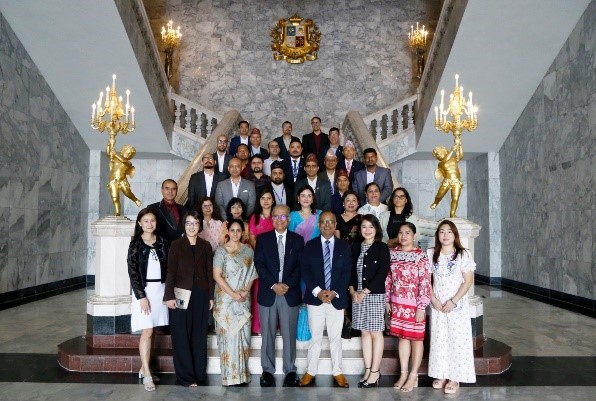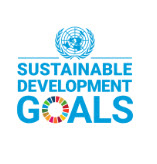Montfort del Rosario School of Architecture and Design, in collaboration with the Support Foundation of Her Majesty Queen Sirikit, The Queen Mother (Silpacheep), at Kaeng Som Maew, Ratchaburi Province, invited Dr. Krisaya Luenganantakul to conduct training on ceramic hand-building techniques for the villagers and local community.
Objectives:
To empower the villagers and community members of Kaeng Som Maew, Ratchaburi Province, through hands-on training in ceramic hand-building and stamp-making techniques. This program aims to preserve traditional craftsmanship, enhance creative skills, promote sustainable livelihoods, and encourage local economic development, while fostering cultural pride and self-reliance.
Project Goals and SDGs Alignment:
- SDG 1: No Poverty – By equipping the community with ceramic hand-building skills, the program helps create opportunities for income generation, reducing poverty in the area.
- SDG 2: Zero Hunger – Promoting sustainable livelihoods through craft-based entrepreneurship improves household income, contributing to better food security and reducing hunger.
- SDG 4: Quality Education – Providing practical, skill-based education fosters lifelong learning, helping the community improve creativity and self-development.
- SDG 5: Gender Equality – Encouraging equal participation of both men and women, the program empowers women to become economically independent through craft-based enterprises.
- SDG 8: Decent Work and Economic Growth – Supporting entrepreneurship and local businesses, this initiative contributes to sustainable economic growth through the development of ceramic products.
- SDG 9: Industry, Innovation, and Infrastructure – Integrating innovative techniques with traditional craftsmanship promotes sustainable industrial development and creative industries in rural communities.
- SDG 10: Reduced Inequalities – The program creates equal learning and economic opportunities, especially for marginalized groups, reducing social and economic disparities.
- SDG 16: Peace, Justice, and Strong Institutions – Strengthening community bonds through shared learning experiences promotes social cohesion, cultural appreciation, and peaceful development.
- SDG 17: Partnerships for the Goals – The collaboration with the Support Foundation of Her Majesty Queen Sirikit highlights the importance of partnerships among governmental, non-governmental, and community organizations to achieve sustainable development goals effectively.
Program Summary:
The two-day training session aimed at empowering the local community through ceramic hand-building and stamp-making techniques. The program was divided into two parts:
Day 1: Assessment, Guidance, and Lecture
- Ceramic Works Observation: The training began by assessing the villagers’ current ceramic skills. Constructive feedback focused on refining craftsmanship, improving surface finishing, and achieving consistency in form and structure.
- Exploring Other Crafts: Participants also engaged in observing other traditional crafts, such as embroidery, weaving, and Lipa grass bag-making, to gain insights into the diverse artistic practices within the community.
- Lecture Session: A two-hour lecture was delivered, covering the fundamentals of hand-building ceramics, design principles (balance, proportion, and form), and the integration of cultural identity into their craftwork. This knowledge aimed to add value and uniqueness to the products.
Day 2: Practical Demonstration and Hands-on Workshop
- Demonstration of Techniques: Dr. Krisaya demonstrated various ceramic hand-building techniques such as slab construction, coiling, and pinch pot methods. Additionally, stamp-making techniques were shown for creating custom decorative patterns on ceramics.
- Workshop Session: Participants spent the day practicing these techniques, applying new skills, exploring creative ideas, and receiving personalized feedback. They were encouraged to combine traditional methods with new ideas, refining their craft.
- Creative Exploration and Feedback: Throughout the workshop, individualized guidance was provided to help participants improve their work, address challenges such as cracking or uneven thickness, and refine design and technique.
Expected Outcomes:
- Empowerment of local villagers with valuable ceramic hand-building and stamp-making skills.
- Enhanced creativity and craftsmanship, leading to potential new economic opportunities and sustainable livelihoods.
- Strengthened sense of cultural identity through craft-based practices and innovation in product designs.
- Improved community collaboration and increased awareness of sustainable entrepreneurship and economic growth.
This initiative exemplified Assumption University’s dedication to using education as a tool for social change, cultural preservation, and sustainable development.


